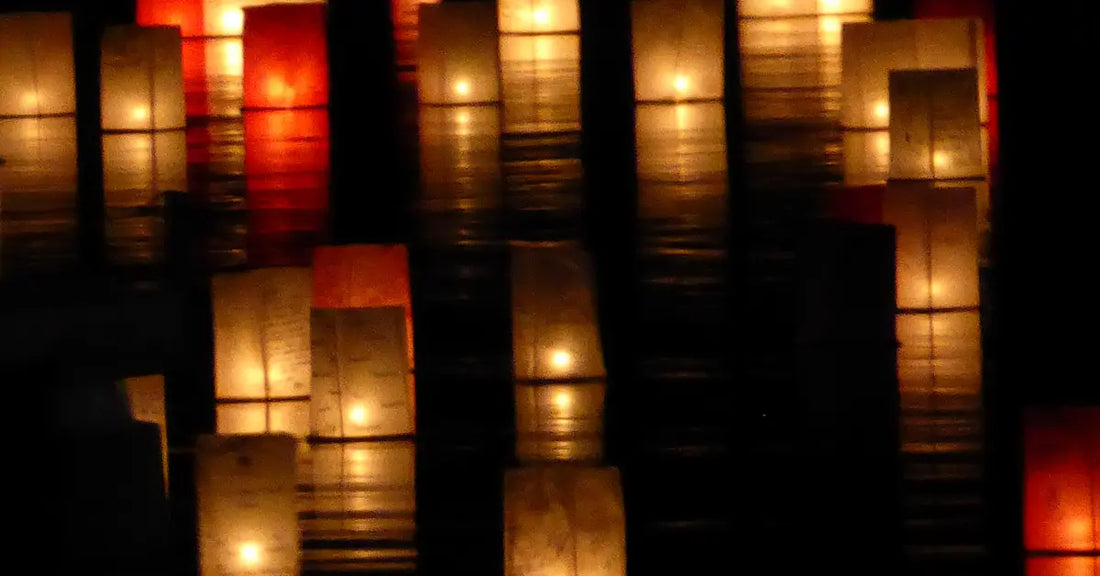Every summer in Japan, something quietly profound takes place. It’s not as flashy as cherry blossom season, nor is it a loud street party. Instead, it’s more reflective, deeply cultural, even spiritual. It’s called Obon, and while you may not hear about it as often as other festivals, for many families, it’s the most meaningful time of the year.
You might ask: What is Obon, exactly? At its core, it’s a time when people believe their ancestors return to visit the living. That might sound mystical, or perhaps poetic, but in Japan, the sentiment runs deep. This isn’t just about rituals or tradition for tradition’s sake. It’s about memory. It’s about presence, even in absence.
Obon usually takes place in mid-August, though some regions observe it in July. The dates can vary slightly depending on local customs or historical calendars, which admittedly can be a little confusing. Still, the heart of the event remains the same: a homecoming of spirits, and a gentle invitation to pause.

What is Obon? A Look at Its Origins
Obon traces back over 500 years, with roots in Buddhist and Confucian practices. Specifically, it stems from a Buddhist story in which a disciple of Buddha sees his deceased mother suffering in the afterlife. Through offerings and prayers, he is able to ease her suffering, and that idea of honoring ancestors to bring them peace became central to the Obon celebration.
Over time, the rituals blended with folk beliefs and evolved into a family-centered occasion. Temples began holding ceremonies, and households lit lanterns to guide spirits. While it's a religious event on some level, it doesn't feel exclusive. It's as much about connection as it is about belief.
How Obon is Celebrated in Japan
Obon in Japan is marked by a range of quiet, beautiful customs. Families return to their hometowns—yes, even in the middle of Japan’s famously intense work culture—to gather, clean ancestral graves, and prepare to welcome their loved ones' spirits home.
In many Japanese homes, there is a small Buddhist altar called a butsudan. People place offerings like flowers, incense, or food to honor their ancestors. This quiet act of giving, even to those who have passed away, shows how important the gift-giving culture in Japan is. Giving isn’t just for special occasions; it’s a daily way to show love and respect.
Then there’s the Bon Odori, a folk dance performed during local festivals. Dancers form circles in parks or temple grounds, moving rhythmically to traditional music. The steps aren’t complicated, and you don’t need to be an expert to join. In fact, you’re encouraged to participate, even if you’re a visitor. And while it’s joyful, it doesn’t feel like a celebration for show. The joy comes with a kind of humility.
That said, not all Obon celebrations look the same. In Tokyo, for example, some districts observe it in July, reflecting older lunar calendar dates. Meanwhile, Kyoto’s famous Gozan no Okuribi (the Daimonji fire festival) lights enormous kanji characters on the mountainside to send spirits back—an awe-inspiring sight, even if you don’t fully grasp its meaning.

A Time for Family, Reflection, and Return
In many ways, Obon feels like a reversal of the usual calendar. Most holidays are about getting away, being loud, or marking something new. Obon in Japan, by contrast, is about returning—to places, people, and even moments that might be long gone.
There’s also an emotional rhythm to it. You might notice that the first few days feel more inward. Visits to cemeteries are done with care. Children might not fully understand, but they follow along. Food is prepared with a bit more intention. Sometimes the favorite dishes of late grandparents are made, just in case they’re... around.
Then, near the end of Obon, families light farewell fires (okuribi) or float lanterns down rivers. It’s symbolic, yes, but it’s also deeply emotional. Watching the light drift away: there’s a kind of ache in it. A quiet goodbye.
How Visitors Can Experience Obon
If you’re planning to visit Japan during Obon, it helps to understand what you’re stepping into. This isn’t the best time for nightlife or shopping sprees. Many small businesses close for a few days. Trains get crowded, not with tourists, but with locals going home.
But if you're open to it, witnessing an Obon celebration can be quietly powerful.
You might attend a local Bon Odori event. These are often open-air and free to join. No one cares if your moves are perfect. People of all ages join in. There’s a soft energy, something between happiness and remembrance.
Some temples also host candlelight ceremonies or offer floating lantern experiences. Be respectful, of course. Photos are allowed in many cases, but the atmosphere deserves a kind of stillness.
And then there’s the food. Seasonal dishes like eggplant and cucumber animals, meant to symbolize spirit vehicles, might seem whimsical at first glance. But they have a purpose: to guide ancestors with compassion.
It’s these small, tender details that define Obon more than any headline event. Not every town has a fire festival or a famous dance. But every place has its own way of remembering.

Bon Odori or Bon Dance
Image Source: https://japanesegarden.org/
Why Obon Still Matters Today
In a world that often rushes forward, Obon in Japan reminds people to look back—not out of regret, but out of gratitude. Even young people who may not fully engage with the spiritual side often return home for Obon. The tradition carries weight, even when its meanings shift slightly.
There’s a quiet irony here. In a country known for futuristic cities, robotic advancements, and trendsetting pop culture, one of the most honored events is about something unseen—something unprovable, really.
But that’s part of its strength. There’s room for ambiguity. You don’t need to believe in spirits to understand the value of pausing, of remembering those who shaped you.
Maybe that’s why the festival continues to thrive. It’s rooted, but not rigid. Personal, but shared. Old, yet adaptable.
Final Words
Obon is not just a festival or ritual. It is emotional housekeeping, making space for your grief, your memories, and keeping things meaningful. You won’t see fireworks or big parades, just families quietly gathered and lanterns glowing softly. Maybe that is enough. Or maybe it is the whole point.
If Obon’s quiet beauty speaks to you, consider bringing a piece of it into your home. The Japarcana collection offers authentic Imabari towels that are soft, high quality, and full of tradition. They are perfect for your moments of reflection, everyday comfort, or thoughtful gifts.
FREQUENTLY ASKED QUESTIONS ( FAQs)
1. What is Obon and why is it important in Japan?
Obon is a traditional Japanese festival that honors the spirits of ancestors. Families return to their hometowns, visit graves, and take part in quiet rituals to welcome and send off loved ones. It’s a deeply cultural time of remembrance, gratitude, and connection across generations.
2. When is Obon celebrated in Japan?
Obon is usually observed in mid-August, though some regions celebrate it in July based on the lunar calendar. It typically lasts for three days, with customs such as Bon Odori (folk dance), lighting lanterns, and visiting ancestral graves.
3. How do people celebrate Obon in Japan?
During Obon, families clean gravesites, offer food at home altars, light lanterns, and participate in folk dances. Many also create symbolic cucumber and eggplant animals to guide spirits. The celebration is quiet, emotional, and rooted in tradition.
4. Can I bring the spirit of Obon into my own home?
Yes. Even outside Japan, you can honor the values of Obon through reflection and intentional rituals. Soft, high-quality items like Imabari towels from Japarcana can add a touch of comfort and mindfulness to your home — perfect for moments of stillness, remembrance, or meaningful gifting.


